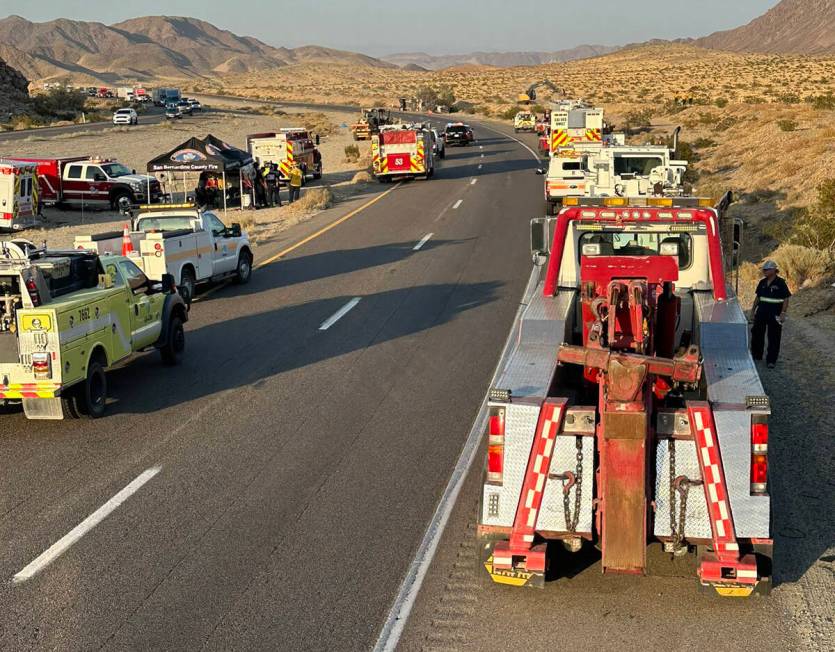COMMENTARY: I-15 fire presented unique challenges

Your Tuesday editorial criticizing the response to the Interstate 15 wreck involving large lithium batteries uses the phrase “California officials.” This omits factors created by the way the United States as a whole is policed and served by local government.
First, while I-15 is policed by a state body, the California Highway Patrol, other forms of emergency response are handled at the county level — in this case, San Bernardino County. One has to ask how close the cooperation is between CHP and the local firefighters. Even if that relationship is good, the stretch of I-15 where the wreck occurred is best described as radio- and cell-signal hostile. This is an inescapable consequence of geography in many places across the West.
Second, you criticize the firefighters for not being able to move the container on their arrival. Let us have a reality check here on what tools are readily available to the average fire department.
Can you name a readily transportable machine that can operate on sand and move a 75,000-pound deadweight on that sand? Now let us throw in that the item concerned is a burning container housing a volatile material such as lithium that has the potential to go into thermal runaway or possibly explode. So this magic vehicle has to offer armor and heat protection to its operator. Perhaps an Army or Marines tracked engineering vehicle might work, but that is not something any county fire service is likely to own, let alone have the means to get where it needs to go.
Sorry, but within the constraints of a county budget and the need to protect the firefighters and other responders from harm, this task was never going to be completed quickly.
That CHP did not immediately begin to turn traffic around to head south again is something that should be investigated. Did they not appreciate the danger presented by the lithium, or did the San Bernardino Fire Department give an overly optimistic estimate of how long it would take to render the scene safe? One thing I have noted on trips down this stretch of I-15 is that CHP deploys minimal resources in the area. This is obvious by how few speeders you see pulled over between Barstow and Primm. I suspect that what few patrols CHP had in San Bernardino County became occupied setting up the I-15 to Interstate 40 detour.
You also state, “There is no rational explanation for why much of this heavily traveled stretch of highway remains just two lanes.” But the state of California has no interest in widening I-15 beyond what is required to get the truck traffic to and from its ports. Easy access to Las Vegas for California citizens results in potential tax dollars for California disappearing into the coffers of the Nevada gaming industry. For California to spend money on I-15 only for the project to result in more money flowing out of the state counts as a double whammy. Why would they do that?
The wider issue in all this is the movement of such large lithium batteries. They are clearly hazardous cargo, but are they marked as such? Perhaps they should be moved only by road where it is unavoidable, and then in a police-escorted convoy at less than full highway speed. I’ve been behind such a convoy on I-15, and it is no fun, so maybe all such batteries should be moved by rail.
Ah, but now the green energy types are screaming that their overhead is being pushed higher. Well, if parts of your industry are not safe, that is the price of doing business. Safety comes first.
Perhaps this incident reveals how the dangers of these devices are (at best) not fully understood, or have been played down to meet an agenda. Either way this places emergency responders all over the country in the dark when it comes to dealing with lithium technology. Seems as if somebody needs to order a pause while all this is assessed.
Steve Potter writes from Las Vegas.